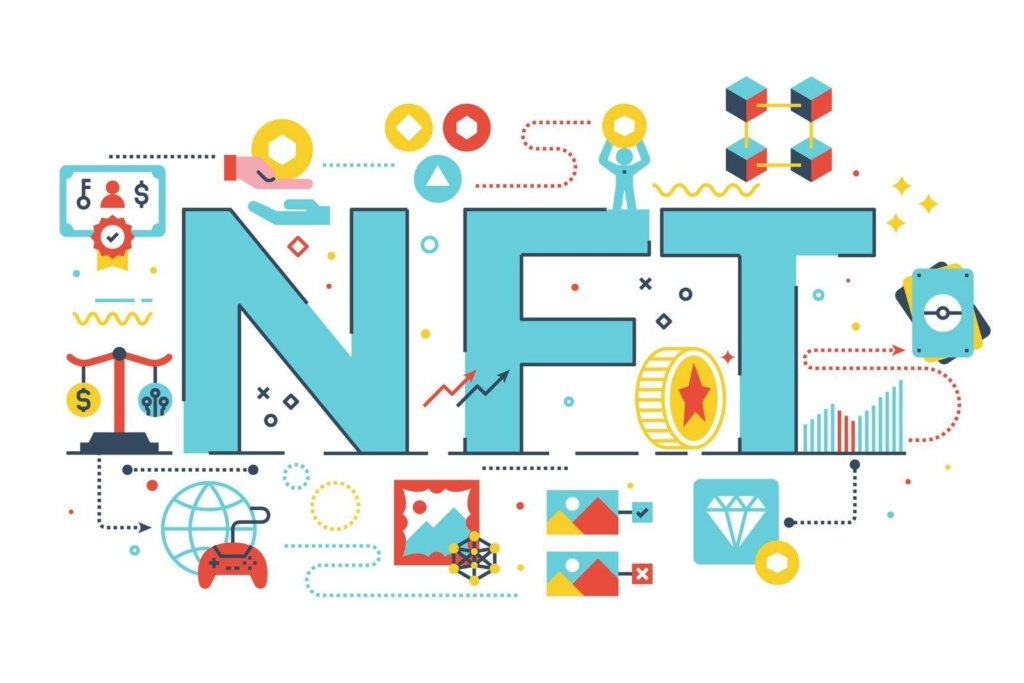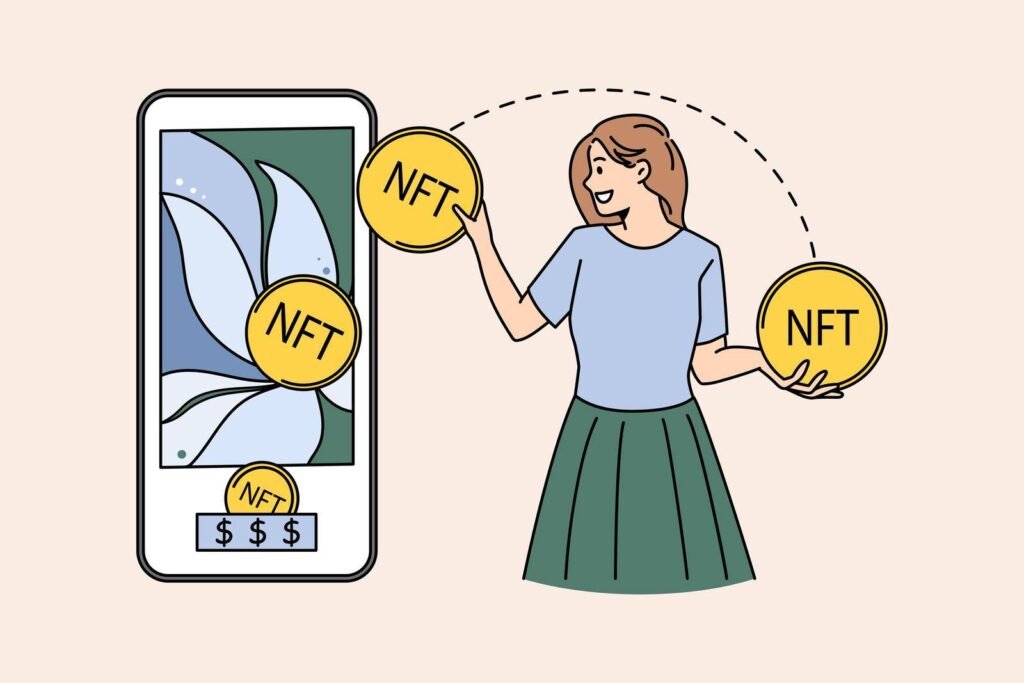NFTs are as of now taking the computerized craftsmanship and collectibles world by storm. Advanced specialists are seeing their lives change because of colossal deals to a new crypto-crowd. Furthermore superstars are participating as they spot another chance to interface with fans. Be that as it may, advanced craftsmanship is just a single method for utilizing NFTs. Truly they can be utilized to address responsibility for novel resource, similar to a deed for a thing in the computerized or actual domain.
On the off chance that Andy Warhol had been brought into the world in the last part of the 90s, he most likely would have stamped Campbell’s Soup as a NFT. It’s inevitable before Kanye puts a run of Yeezys on Ethereum. Furthermore one day possessing your vehicle may be demonstrated with a NFT.
What’s a NFT?
NFTs are tokens that we can use to address responsibility for things. They let us tokenise things like workmanship, collectibles, even land. They can have each official proprietor in turn and they’re gotten by the Ethereum blockchain – nobody can change the record of possession or duplicate/glue another NFT into reality.
NFT represents non-fungible token. Non-fungible is a financial term that you could use to portray things like your furnishings, a melody record, or your PC. These things are not exchangeable for different things since they have extraordinary properties.
Fungible things, then again, can be traded in light of the fact that their worth characterizes them rather than their one of a kind properties. For instance, ETH or dollars are fungible since 1 ETH/$1 USD is replaceable for another 1 ETH/$1 USD.
The web of resources
NFTs and Ethereum tackle a portion of the issues that exist in the web today. As everything turns out to be more computerized, there’s a need to recreate the properties of actual things like shortage, uniqueness, and evidence of proprietorship. Also that computerized things frequently just work with regards to their item. For instance you can’t exchange an iTunes mp3 you’ve bought, or you can’t trade one organization’s faithfulness focuses for another stage’s credit regardless of whether there’s a business opportunity for it.
This is the way a web of NFTs contrasted with the web a large portion of us use today looks…
How do NFTs function?
NFTs are not quite the same as ERC-20 tokens, like DAI or LINK, in that every individual token is totally one of a kind and isn’t detachable. NFTs provide the capacity to appoint or guarantee responsibility for one of a kind piece of advanced information, identifiable by utilizing Ethereum’s blockchain as a public record. A NFT is printed from advanced articles as a portrayal of computerized or non-computerized resources. For instance, a NFT could address:
Advanced Art:
- GIFs
- Collectibles
- Music
- Recordings
- Genuine Items:
- Deeds to a vehicle
- Passes to a certifiable occasion
- Tokenized solicitations
- Authoritative reports
- Marks
Loads more choices to get inventive with!

A NFT can have each proprietor in turn. Possession is overseen through the uniqueID and metadata that no other token can repeat. NFTs are stamped through shrewd agreements that allot possession and deal with the adaptability of the Nft’s. At the point when somebody makes or mints a NFT, they execute code put away in savvy gets that adjust to various principles, for example, ERC-721. This data is added to the blockchain where the NFT is being made due. The stamping system, from a significant level, has the accompanying advances that it goes through:
- Making another square
- Approving data
- Recording data into the blockchain
- NFT’s have a few exceptional properties:
Every token stamped has an interesting identifier that is straightforwardly connected to one Ethereum address.
They’re not straightforwardly exchangeable with different tokens 1:1. For instance 1 ETH is actually equivalent to another ETH. This isn’t true with NFTs.
Every token has a proprietor and this data is effectively irrefutable.
They live on Ethereum and can be traded on any Ethereum-based NFT market.
At the end of the day, on the off chance that you own a NFT:
You can undoubtedly demonstrate you own it.
Demonstrating you own a NFT is basically the same as demonstrating you have ETH in your record.
For instance, suppose you buy a NFT, and the responsibility for exceptional token is moved to your wallet through your public location.
The token demonstrates that your duplicate of the computerized document is the first.
Your private key is verification of-responsibility for unique.
The substance maker’s public key fills in as an endorsement of credibility for that specific computerized ancient rarity.
The makers public key is basically an extremely durable piece of the symbolic’s set of experiences. The maker’s public key can show that the symbolic you hold was made by a specific individual, subsequently adding to its fairly estimated worth (versus a fake).
One more method for contemplating demonstrating you own the NFT is by marking messages to demonstrate you own the private key behind the location.
As referenced over, your private key is verification of-responsibility for unique. This lets us know that the private keys behind that address control the NFT.
A marked message can be utilized as confirmation that you own your private keys without uncovering them to anyone and subsequently demonstrating you own the NFT too!
Nobody can control it in any capacity.
You can sell it, and sometimes this will procure the first maker resale eminences.
Or on the other hand, you can hold it everlastingly, resting serenely realizing your resource is gotten by your wallet on Ethereum.
Furthermore in the event that you make a NFT:
- Undoubtedly demonstrate you’re the maker.
- Decide the shortage.
- You can procure sovereignties each time it’s sold.
- Sell it on any NFT market or distributed. You’re not secured to any stage and you needn’t bother with anybody to transitional.
Shortage
The maker of a NFT will choose the shortage of their resource.
For instance, think about a pass to a game. Similarly as a coordinator of an occasion can pick the number of passes to sell, the maker of a NFT can conclude the number of copies exist. Once in a while these are accurate imitations, for example, 5000 General Admission tickets. At times a few are stamped that are practically the same, however each somewhat unique, like a ticket with a doled out seat. For another situation, the maker might need to make a NFT where just one is printed as a unique uncommon collectible.
In these cases, each NFT would in any case have a remarkable identifier (like a scanner tag on a customary “ticket”), with only one proprietor. The expected shortage of the NFT matters, and is up to the maker. A maker might plan to make each NFT totally remarkable to make shortage, or have motivations to deliver a few thousand copies. Keep in mind, this data is all open.
Eminences
Some NFTs will consequently pay out sovereignties to their makers when they’re sold. This is as yet a developing idea yet it’s one of the most remarkable. Unique proprietors of EulerBeats Originals procure a 8% eminence each time the NFT is sold on. What’s more a few stages, similar to Foundation and Zora, support sovereignties for their specialists.
This is totally programmed so makers can simply pause for a moment and acquire eminences as their work is sold from one individual to another. Right now, sorting out sovereignties is extremely manual and needs precision – a great deal of makers don’t get compensated what they merit. In the event that your NFT has an eminence customized into it, you’ll never pass up a great opportunity.



